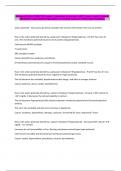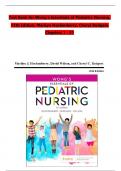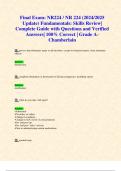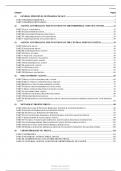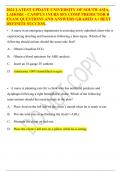Exam (elaborations)
Advanced Patho NURS 5315 exam 1 | Questions & Answers (100 %Score) Latest Updated 2024/2025 Comprehensive Questions A+ Graded Answers | With Expert Solutions
- Module
- Institution
Advanced Patho NURS 5315 exam 1 | Questions & Answers (100 %Score) Latest Updated 2024/2025 Comprehensive Questions A+ Graded Answers | With Expert Solutions
[Show more]
